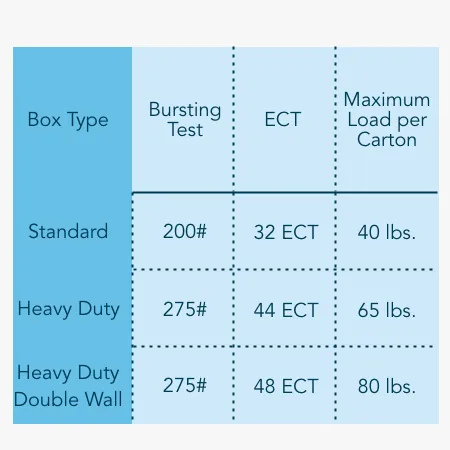Testing the strength of corrugated cardboard packaging


Solution
- Software-controlled ECT compression tester
- Compression plate and guide blocks
- UTM with fixtures for RCT and FCT testing
Benefits
- Intuitive software to apply bespoke procedures or international standards
- Automatic calculation of Edge Crush Resistance Value
- Pre-programmed test routines for QC checks at point-of-manufacture
- Extensive reporting to log results for audit purposes
Requirement
Over the weeks of the COVID-19 lockdown confinement there has been a surge of home deliveries, with even e-commerce giants struggling to fulfil demands and hiring fleets of new workers. Hearing the knock at the door to receive a package provides a small sense of normality and pleasure to many. And it is the humble cardboard box, which is neatly and safely enabling the widespread distribution of goods. Beyond household deliveries, cardboard is also an object serving on the frontline of public health services, enabling mass deliveries of vitally needed medical equipment.
Modern production and shipping have changed drastically, and the testing methods we use to measure a package’s strength have changed accordingly. These days, much of the shipping is done as boxes on pallets, delivering goods from one business to another business (B2B). Testing the edge wall of a box for its stacking strength is the most sensible and reliable measure of how well the box will hold its form under the vertical weight during transit.
Solution
Test Methods
For many years, the Mullen Burst Test had been the main industry standard for the grading of corrugated board packaging. It required a minimum board base weight. However, as more recycled content is now used in the manufacture of corrugated board, it was discovered that recycled board of the same weight did not always perform so well in the Mullen Burst test. This was despite the fact that these ‘recycled board’ cases still had very good compression and damage resistance qualities, as evidenced in the Edge Crush Test (ECT).
The Mullen Burst Test measures the force required to puncture the face of corrugated board and is reported in pounds per square inch (psi) boards are thus rated accordingly e.g. #275. As such, this test was favoured by companies with heavy, awkward-shaped contents requiring protection where the linerboard must not burst outwards. However for companies who simply wish to know the maximum weight a box can withstand, then knowing the overall stacking strength is the primary concern – this is where the Edge Crush Test comes into its own and has become the more common test nowadays.
ECT is a measure of the edgewise compressive strength of corrugated board. It is measured by compressing a predefined section of board on its edge between two rigid platens. This compression is performed perpendicularly to the direction of the flutes until the board collapses and a peak load is reached. This load is reported as force per unit width (lb/in, kN/m etc.). When reported as an ECT value (e.g. 44 ECT), this relates to a minimum strength value and corresponds to pounds per inch width (lb/in). Since the edges and corners of a box are mostly responsible for bearing the load, it gives a good picture of material strength allowing cardboard manufacturers to perform quality control, and box manufacturers to select the most appropriate materials and processes to produce their protective packaging.
A proper ECT-rated corrugated board provides an equivalent level of strength to a Mullen Burst rated board, but typically uses less material. Fewer raw materials, meaning lower energy requirements and reduced pollution, are features associated with properly sized ECT-rated cartons incorporating increasing amounts of recycled content.
Standards
There are a number of international standards from various standards authorities, which address the subject of measuring the crush force by the Edge Crush Test.
A variety of methods are in use in different parts of the world. These can be classified into three groups as follows:
a) Those in which a carefully cut rectangular test piece is tested without any special treatment or modification (e.g. ISO 3037 “Corrugated fibreboard — Determination of edgewise crush resistance -unwaxed edge method”).
b) Those in which the edges of the test piece to which the force is applied are waxed, to prevent the test result being influenced by “edge effects“ (e.g. ISO 13821 “Corrugated fibreboard — Determination of edgewise crush resistance — waxed edge method”).
c) Those in which the test piece edges are not waxed but the shape of the test piece is such that the length is substantially reduced at a point midway between the loaded edges, in order to induce the failure to occur away from those edges (e.g. FEFCO 8, TAPPI T838 and TAPPI T839).
Test equipment
Mecmesin has worked together with both producers and users of corrugated cardboard to supply cost-effective and easy-to-use ECT test systems.
A software-controlled compression tester, featuring a rigid loading column and precision loadcell, is equipped with rectangular plattens. Two free-standing guide blocks serve to support the corrugated test specimen thus keeping it parallel to the plattens. The test programme controls the tester to descend at a constant speed until a set-load is reached at which point the guide blocks can be removed. The tester then continues further until the corrugated board collapses and the software automatically calculates the Edge Crush Resistance value in the desired unit of measurement (lb/in, N/mm).
Bench-top models of ECT Compression Testers are available in capacities of 2.5 kN – 10 kN depending on the range of board to be tested.






